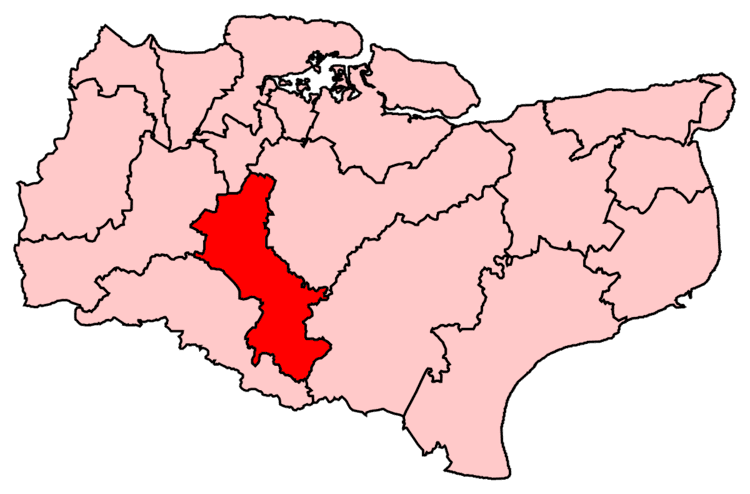Created 1997 | Electorate 70,576 (December 2010) Number of members 1 | |
 | ||
Replaced by | ||
Maidstone and The Weald is a constituency represented in the House of Commons of the UK Parliament since 2010 by Helen Grant, a Conservative.
Contents
Boundaries
1997-2010: The Borough of Maidstone wards of Allington, Barming, Boughton Monchelsea, Bridge, Coxheath, East, Farleigh, Heath, High Street, Loose, Marden, North, South, Staplehurst, and Yalding, and the Borough of Tunbridge Wells wards of Benenden, Cranbrook, Frittenden and Sissinghurst, Hawkhurst, and Sandhurst.
2010-present: The Borough of Maidstone wards of Allington, Barming, Bridge, Coxheath and Hunton, East, Fant, Heath, High Street, Loose, Marden and Yalding, North, South, and Staplehurst, and the Borough of Tunbridge Wells wards of Benenden and Cranbrook, and Frittenden and Sissinghurst.
The largest settlement is the central county town of Maidstone in Kent in south-east England with smaller settlements spread throughout agriculture-rich Maidstone borough and partly wooded Tunbridge Wells borough.
History
The constituency was created for the 1997 general election, after the previous Maidstone constituency was split in two: its southeast wards of Shepway and Park Wood of the town itself and the rural wards east of the town joined Faversham in the new Faversham and Mid Kent constituency. The remaining two-thirds of the electorate in west/central Maidstone were reunited with the town wards that had been lost in 1983 to Mid Kent (which was abolished), and joined by a rural part of the Weald to the south of the town, previously in the Tunbridge Wells constituency.
The MP for the seat from its creation in 1997 was Ann Widdecombe of the Conservative Party. Widdecombe was MP for the former seat of Maidstone 1987-97, and served as a Home Office Minister (of State) in the government of John Major from 1995 to 1997, and as Shadow Home Secretary from 1999 to 2001. She stood down at the 2010 general election, to be succeeded by its winner, who was Helen Grant, also a Conservative.
Constituency profile
Most of the electorate live in urban Maidstone, which has some light industry but whose economy is increasingly dominated by the service sector (including care, hospitality and insurance). The south of the constituency is rural with significant orchards and market gardens. Many residents commute to London, with the relevant terminus being London Bridge. To summarise this is an urban-rural seat in a prosperous part of Kent.
